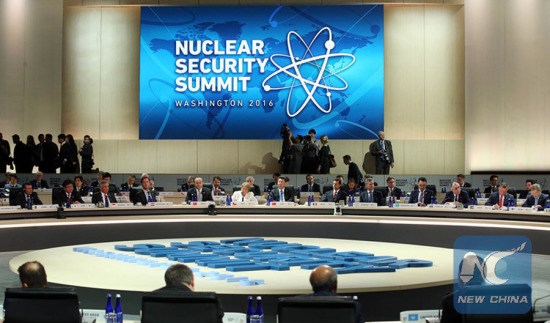
Chinese President Xi Jinping attends the closing session of the 4th Nuclear Security Summit in Washington D.C., the United States, April 1, 2016. (Photo: Xinhua/Yao Dawei)
Nuclear power is indispensable as it has become a vital energy source and taken a significant porportion in today's energy structure; yet the enormous power that nuclear energy possesses can bring havoc to the world if not handled with care and caution.
The two-day Nuclear Security Summit in Washington D.C., which was attended by Chinese President Xi Jinping, U.S. President Barack Obama and other world leaders, has become the spotlight this week, reminding people of the importance of nuclear security. [Special coverage]
Here are some key figures for nuclear power:
1957
In December of 1957, the Shippingport Atomic Powers Station began operation and provided electricity to the power grid, making it the world' s first full-scale atomic electric power plant devoted exclusively to peaceful uses.
442
According a recent report from the IAEA, the world' s governing body for nuclear energy, there, as of February 4, 2016, are 442 nuclear power plant units with an installed electric net capacity of about 384 GW in operation in 31 countries and regions.
99
The United States has the world' s most nuclear plant units - 99 of them - with a total installed capacity of approximately 99 GW. China has 31 nuclear plant units in operation.
338
From 1966 to 1979, during the first golden era of nuclear power, the world built 338 nuclear plant units, while only 122 units were built after major disasters such as the Three Mile Island and Chernobyl swayed the confidence of the public.
66 vs 950
The total lifecycle of nuclear power electricity produces about 66g of carbon oxide per kilowatt-hour, while a coal-fired plant on average emits 960g of CO2 per kilowatt-hour, according to a study by Benjamin K. Sovacool, a research fellow at the National University of Singapore.
10.9%
Nuclear power plants provided 10.9 percent of the world's electricity production in 2012. In 2014, 13 countries relied on nuclear energy to supply at least one-quarter of their total electricity.


















































